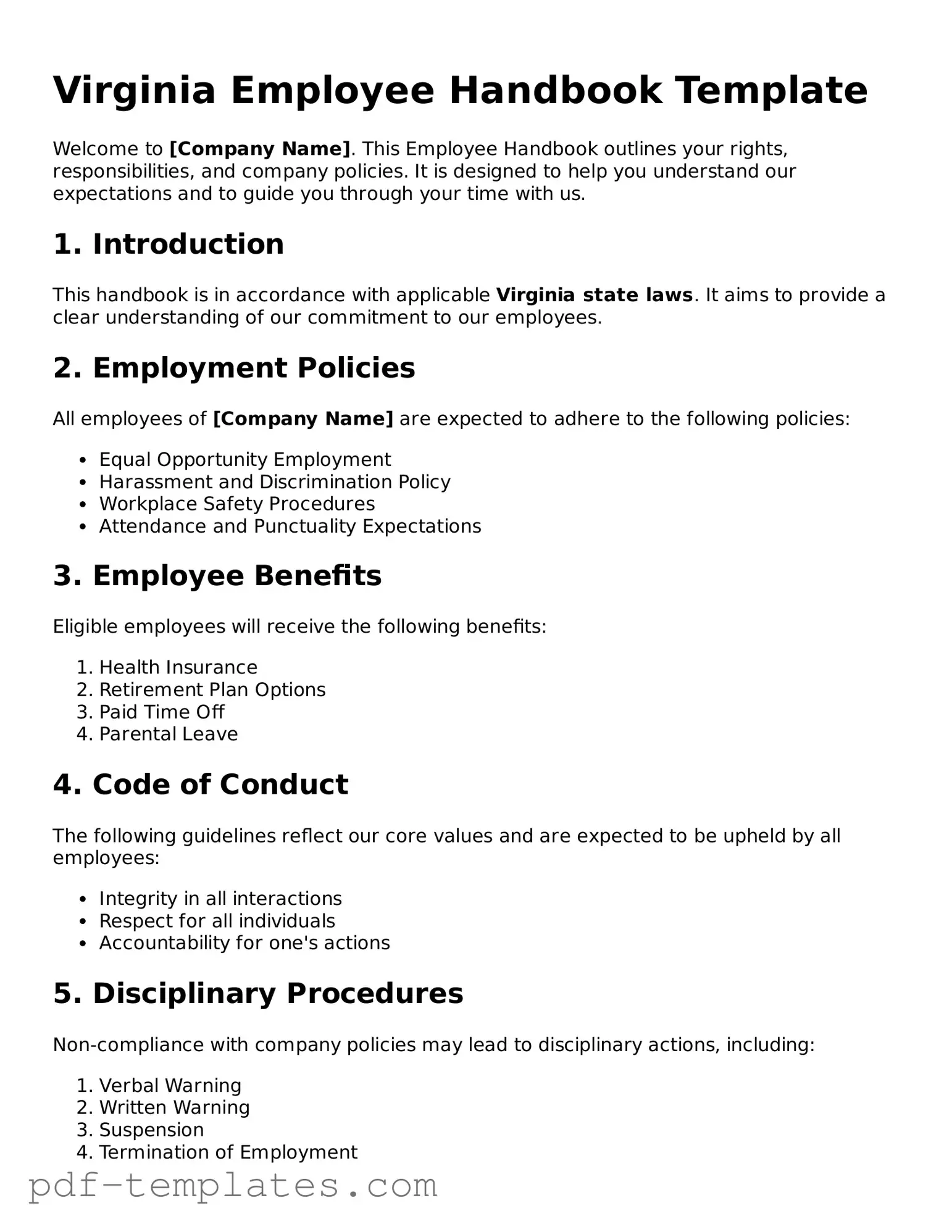The Virginia Employee Handbook form shares similarities with the Employee Manual, which serves as a comprehensive guide for employees regarding company policies, procedures, and expectations. Both documents outline workplace rules, employee rights, and responsibilities, ensuring that employees understand their roles within the organization. The Employee Manual often includes sections on workplace conduct, dress code, and attendance policies, just like the Employee Handbook.
Another related document is the Orientation Guide. This guide is typically provided to new hires during their onboarding process. It offers an overview of the company culture, mission, and values, much like the Employee Handbook. Both documents aim to familiarize employees with the organization’s environment and provide essential information that helps them integrate smoothly into their new roles.
The Policy Manual is also similar in function. This document details specific company policies, such as leave policies, harassment policies, and disciplinary procedures. While the Employee Handbook may summarize these policies, the Policy Manual provides in-depth explanations and legal considerations. Both documents serve to protect the company and its employees by clearly outlining acceptable behaviors and procedures.
The Code of Conduct is another document that aligns with the Employee Handbook. This code establishes the ethical standards and expectations for employee behavior. It often addresses issues like conflicts of interest and confidentiality. Like the Employee Handbook, the Code of Conduct emphasizes the importance of maintaining a professional and respectful workplace.
The Benefits Guide is a crucial document that outlines the benefits offered to employees, such as health insurance, retirement plans, and paid time off. While the Employee Handbook may reference these benefits, the Benefits Guide provides detailed information about eligibility and enrollment processes. Both documents aim to inform employees about their entitlements and support their overall well-being.
The Safety Manual is essential for ensuring a safe working environment. This document outlines safety protocols, emergency procedures, and reporting mechanisms for workplace hazards. Similar to the Employee Handbook, the Safety Manual emphasizes the importance of employee safety and the responsibilities of both employees and employers in maintaining a secure workplace.
The Training Manual is another document that complements the Employee Handbook. It provides detailed instructions and guidelines for specific job functions and training procedures. While the Employee Handbook gives an overview of employee responsibilities, the Training Manual dives deeper into the skills and knowledge required to perform specific tasks effectively.
The Employee Evaluation Form is also similar, as it outlines the performance review process. This form provides criteria for assessing employee performance, including job competencies and goals. The Employee Handbook may reference the evaluation process, but the Employee Evaluation Form focuses specifically on how performance will be measured and the feedback process, ensuring clarity for employees.
The Leave of Absence Policy document is important for understanding employee rights regarding time off. It details various types of leave, such as medical leave and family leave, and the procedures for requesting time off. The Employee Handbook typically summarizes these policies, while the Leave of Absence Policy provides a more comprehensive look at the legal and procedural aspects of taking leave.
Finally, the Grievance Procedure document outlines the steps employees should take if they have a complaint or concern. This document specifies the channels for reporting issues and the process for resolving conflicts. Similar to the Employee Handbook, it aims to create a fair and transparent workplace by encouraging open communication and providing a clear path for addressing grievances.
